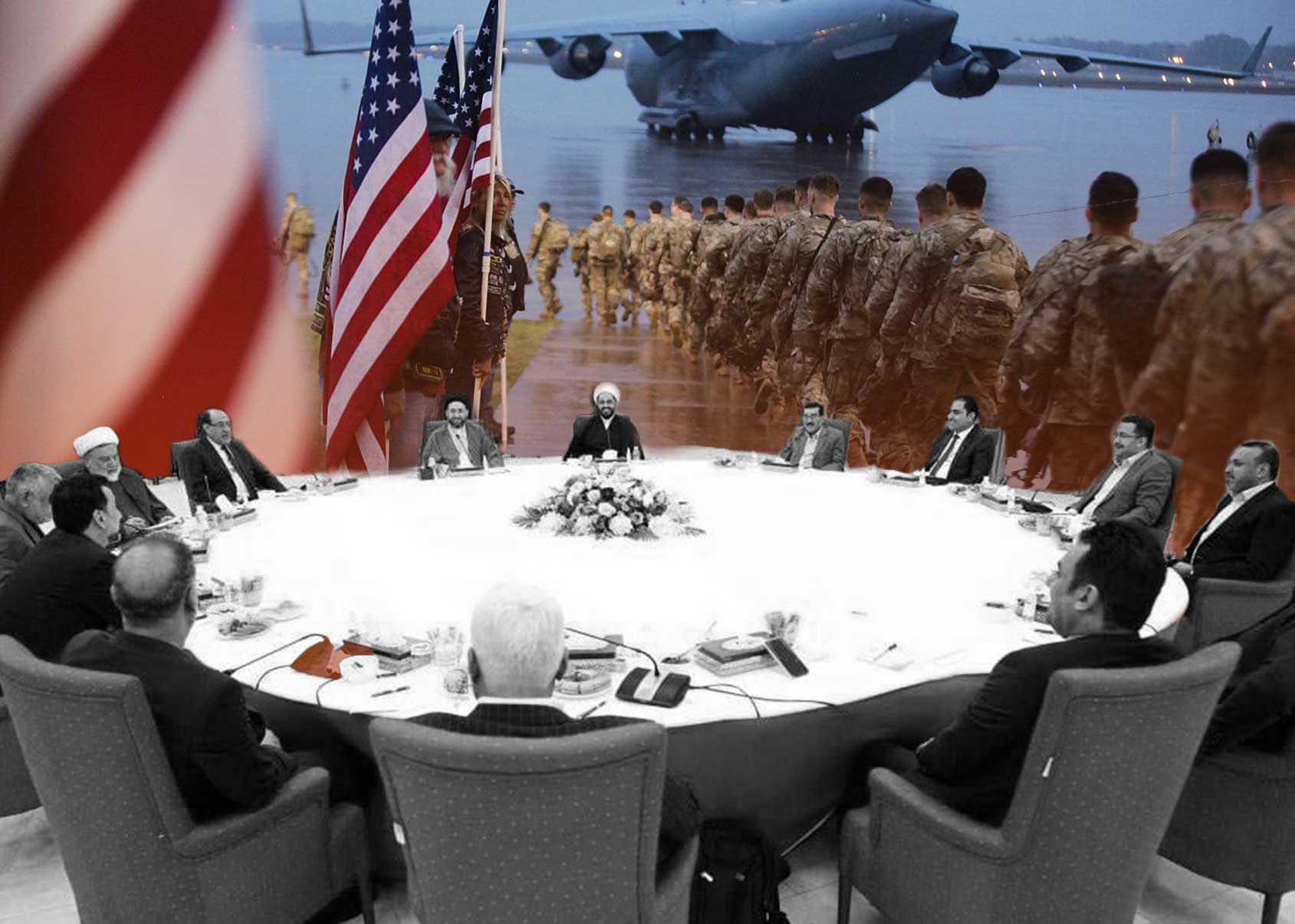In recent days, the US military movements in Iraq have captured significant attention both on the streets and across social media platforms. These actions have stirred concerns among Iraq's ruling Shiite parties. For certain Iraqis, particularly those dissatisfied with or opposed to the current political process, these developments have given rise to their expectation in initiating the end of the prevailing governance marked by sectarian and party divisions, as well as pervasive corruption that often supersedes legal and systemic structures. However, the concealed facets of these movements reveal that the Iraqi public, while frequently associated with the notion of a "conspiracy theory," continues to perceive the United States as a positive influence responsible for toppling oppressive regimes, just as it did in 2003 with Saddam Hussein. Undoubtedly, a potent propaganda campaign also contributes to shaping this perspective.
Alina L. Romanowski, the US Ambassador to Iraq, has asserted that the repositioning of US troops within Iraq constitutes a routine rotational measure, unrelated to the internal dynamics of the country. Romanowski the powerful American woman in Iraq emphasized Washington's dedication to cultivating collaborative ties with Baghdad. In a contrasting perspective, Hashd commander Waad Qaddo, who leads the 30th Brigade, he unveiled that officials in Washington have communicated a clear message to the Iraqi military delegation: their intention to assume control over the Iraqi-Syrian border. As part of this endeavor, they are strategically substituting 2,500 troops with Ohio National guard fighters, In accordance with this, the movement is planned and directed elsewhere.
While the primary target is Syria, the repercussions of this movement are likely to extend to Iraq's internal security. This is due to the obstruction being created on the Tehran-Damascus route, coupled with increased surveillance as another project objective, it pertains to Iraq as it moves through Iraqi territory. Notably, security posts along this route are under the control of Shiite armed groups overseen by Tehran. Besides this aim, the United States is seemingly focused on bolstering Israel's security and tightening the blockade around the Assad regime in Syria, particularly considering its recent efforts to foster better ties with Arab nations. Tehran's leadership has keenly observed these developments through the Iranian Foreign Ministry, they've not only voiced opposition to the American movement and deployment but also encouraged Iraq to resist acceptance. Concurrently, pressure on Iraq has intensified, urging swift disarming of Iranian Kurdish opposition factions in the Kurdistan Region. The directive is to establish dedicated camps for them before September 19th.
Concurrently with the US maneuver along the Iraqi border, a fresh wave of unrest has erupted within Syria, particularly concentrated in the southern region. This uprising primarily stems from standing against ending fuel aid, a protest against soaring prices, and an earnest aspiration to enhance the general quality of life. Notably, some Certain Shiite sources interpret this situation in a manner reminiscent of the 2011 uprising, perceiving it as a fundamental element of the broader U.S. strategy, to create a security cordon in the form of a region or separate area in southern Syria in the form of western cantons. This calculated move effectively encircles it from both the northern and southern perimeters. In this configuration, Iraq shares a border with an additional Syrian region that exists independently from the authority of the Assad regime. A remarkable development includes the third visit this year by US CENTCOM commander Michael E. Kurilla to areas under Syrian opposition control, particularly in the eastern reaches of the Euphrates. During this visit, Kurilla engaged a meeting with Syrian Democratic Forces commanders, and notably, several congressional members ventured into the domains commanded by opposition factions. This renewed spotlight on Syria contrasts markedly with the stance of the previous US administration, which had opted for a withdrawal from the region.
Even though Qais al-Khazali, the Secretary-General of the Asa’ib, asserts that the Americans intend to "forge a new region along the Iraqi border," intriguingly the Shiite groups both those in the Hashd al-shaabi and those directly affiliated with Iran or allied and close to Tehran are dealing ineffectively compared to the significant scale of the development, in addition to considering themselves a part of “Resistance Front”, in early 2020 they forced the Iraqi parliament to withdraw foreign troops from Iraq, especially US troops. Presently, the sole entities that have responded to the recent US maneuver are the Nujaba Movement and the Hezbollah battalions, the first operates beyond the realm of the political process, advocating for a response to counter US actions, and the second has yet to articulate a definite stance in its statement, their expressions yielded no substantial impact.
It is believed that the preoccupation of the Hashd and Shiite armed groups with governing and distributing state privileges might have diverted their focus from countering the US military movement. This became especially evident when it emerged that the US restricted Iraq’s access to its own dollars. Another perspective suggests that their silence could stem from a strategic plan or agreement between Iran and the United States. Notably, this speculation gains ground due to recent covert agreements involving Iranian oil exports and the release of blocked Iranian funds. Simultaneously, there is a possibility that the Americans may have exerted pressure on Shiite groups through the Iraqi government to maintain silence. This is particularly notable considering that the commander of the 30th Brigade of Hashd disclosed the Americans' request for assurances that Iraqi Shiite armed factions, as a whole to refrain from military movements aimed beyond the town of Al-Qaim and Al-Anbar province.

